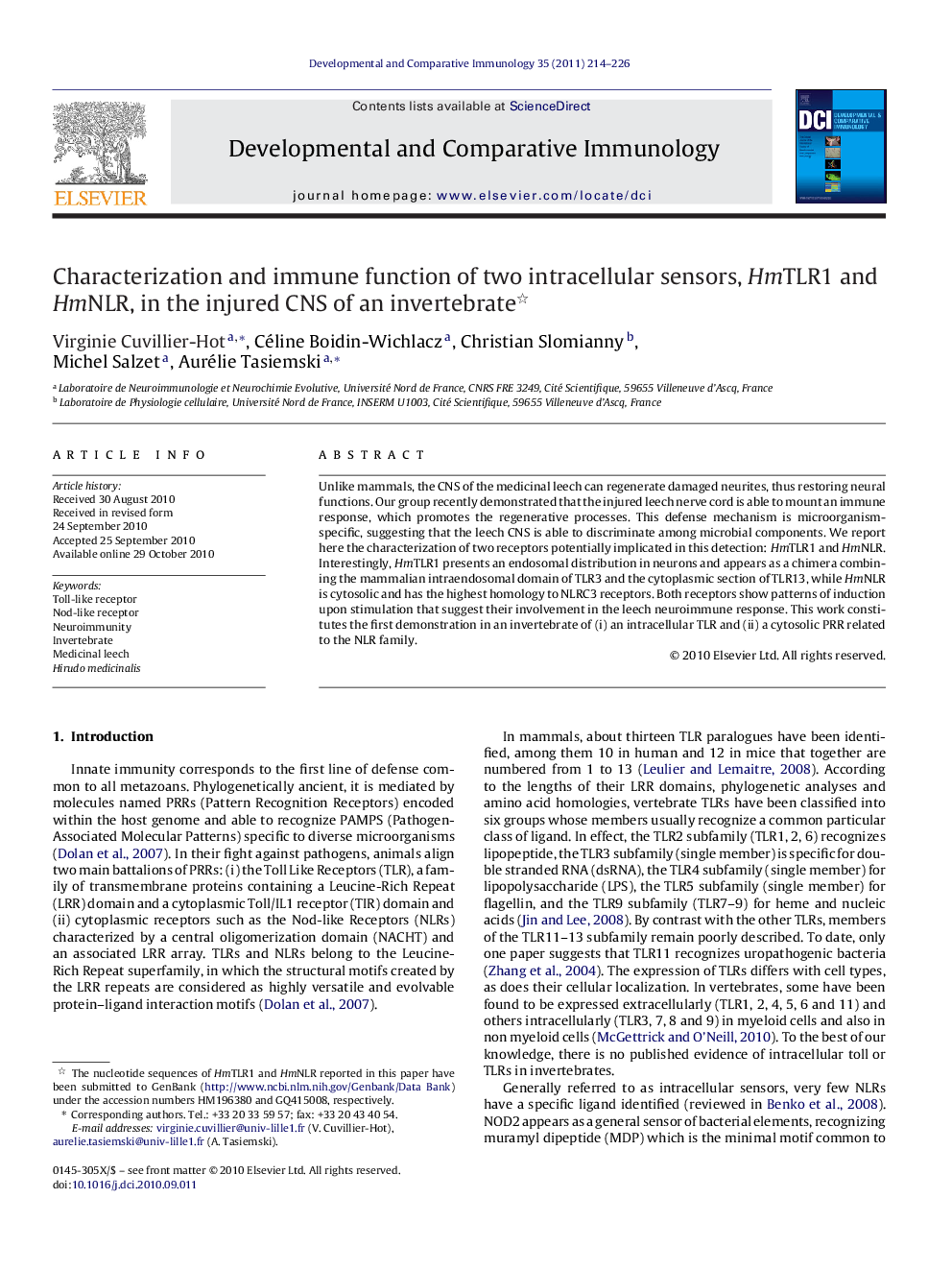| Article ID | Journal | Published Year | Pages | File Type |
|---|---|---|---|---|
| 2429452 | Developmental & Comparative Immunology | 2011 | 13 Pages |
Unlike mammals, the CNS of the medicinal leech can regenerate damaged neurites, thus restoring neural functions. Our group recently demonstrated that the injured leech nerve cord is able to mount an immune response, which promotes the regenerative processes. This defense mechanism is microorganism-specific, suggesting that the leech CNS is able to discriminate among microbial components. We report here the characterization of two receptors potentially implicated in this detection: HmTLR1 and HmNLR. Interestingly, HmTLR1 presents an endosomal distribution in neurons and appears as a chimera combining the mammalian intraendosomal domain of TLR3 and the cytoplasmic section of TLR13, while HmNLR is cytosolic and has the highest homology to NLRC3 receptors. Both receptors show patterns of induction upon stimulation that suggest their involvement in the leech neuroimmune response. This work constitutes the first demonstration in an invertebrate of (i) an intracellular TLR and (ii) a cytosolic PRR related to the NLR family.
